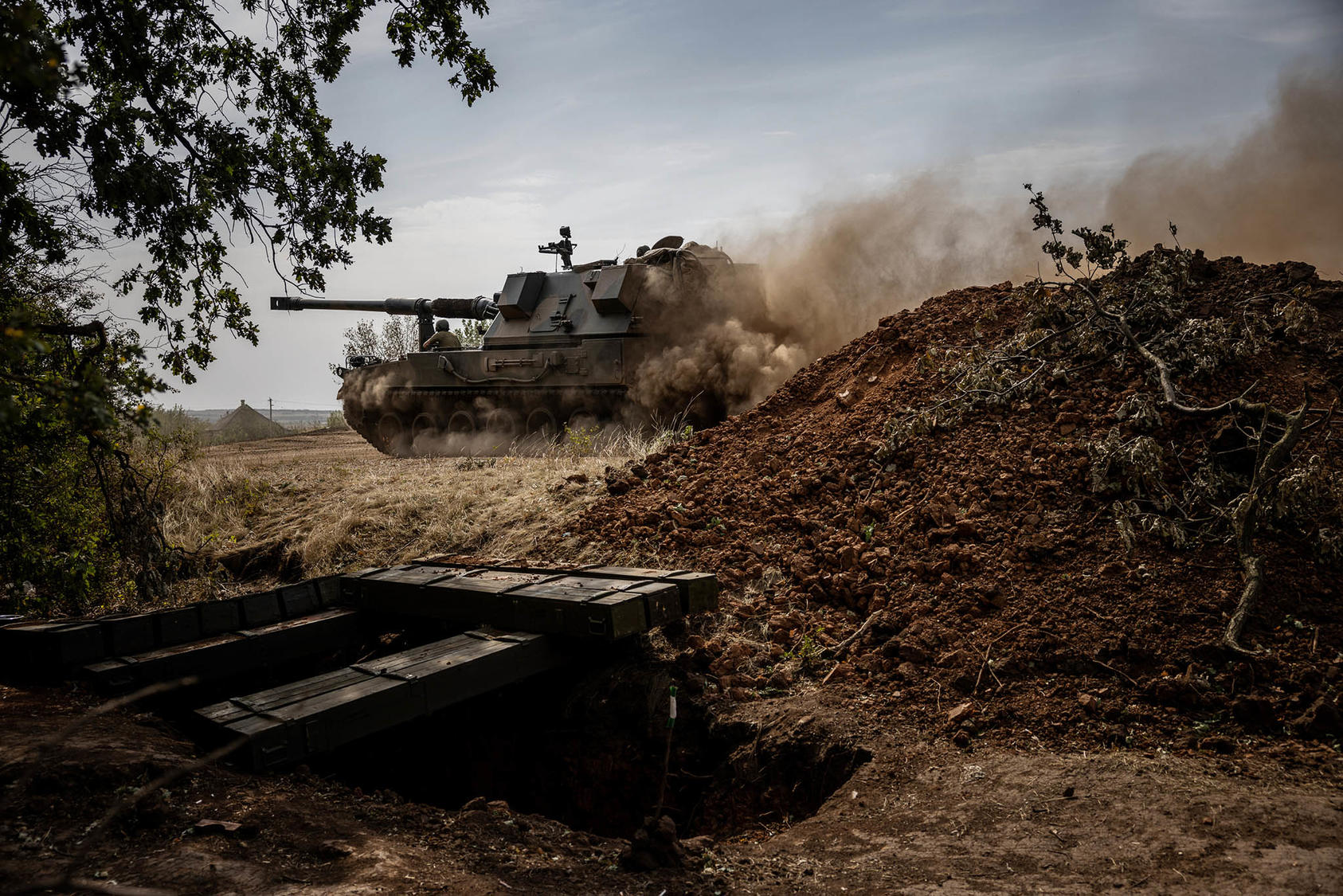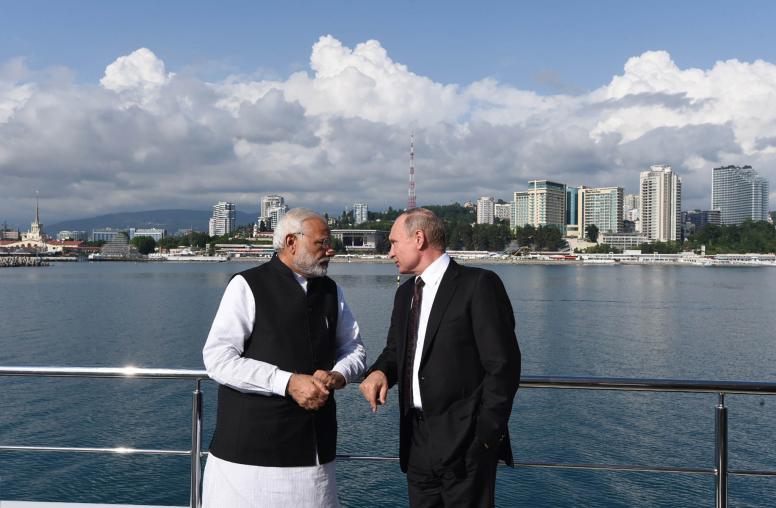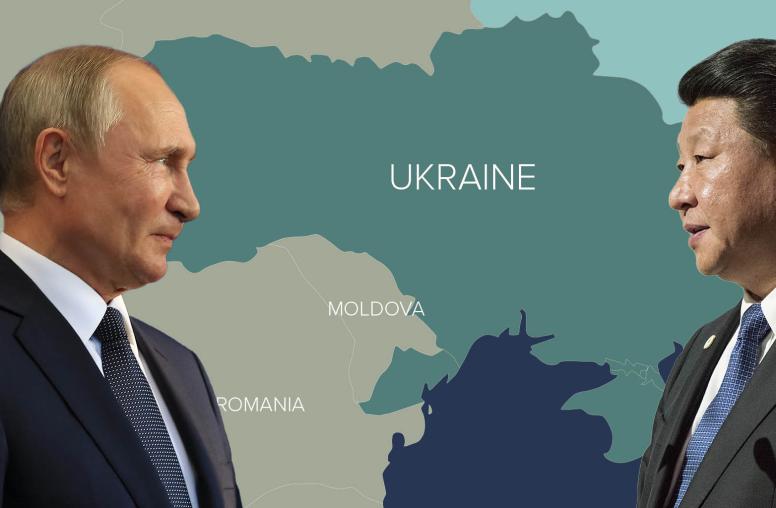How Ukraine’s Counteroffensives Managed to Break the War’s Stalemate
Ukrainian forces have made swift gains in the east near Kharkiv. How will Russia respond?
In recent weeks, two Ukrainian counteroffensives — one in the south near Kherson and another in the east near Kharkiv — have pushed back Russian forces after months of grueling deadlock across the front lines. The eastern Kharkiv attack has been particularly successful, as Ukrainian forces continue to reclaim vast swaths of territory from a seemingly stunned Russian military. USIP’s Mary Glantz examines the resilience of Ukrainian forces thus far, how Ukraine managed to catch the Russian military off-guard outside Kharkiv and Russia’s reaction to what may be a major inflection point in the ongoing conflict.

How has Ukraine been able to make such dramatic, swift progress in recent days in retaking territory in the northeast?
Ukraine appears to have pulled off an operational surprise, amassing large numbers of troops and equipment for an offensive without the Russians being aware (or responding).
Ukraine had earlier advertised plans for a large-scale counteroffensive in the south near Kherson. In response, Russia moved units to resist the expected Ukrainian push there. In advance of that southern attack, Ukrainian forces conducted a number of strikes behind Russian lines — blowing up ammunition storage locations and bridges that were used to supply Russian front-line units. When Ukraine finally launched the southern counteroffensive at the end of August, they claimed to have broken through Russian front lines, but information was scarce, and progress seemed to be slow.
In contrast, the early September Kharkiv counteroffensive in the east was much more of a surprise and appears to have caught the Russians unprepared. Ukrainian forces managed to plunge deep into Russian positions, threatening to encircle large numbers of Russian troops. Russian soldiers fled — leaving behind weapons and ammunition — which allowed Ukraine to re-capture key cities like Izyum. Analysts at the Institute for the Study of War assess that the Ukrainian capture of Izyum “dooms the initial Russian campaign plan for this phase of the war.”
What does this demonstrate about the resolve of the Ukrainian forces and the support they’ve received from the international community?
Earlier this summer, sources reported that months of grinding warfare in the Donbas had caused morale in both Ukrainian and Russian combat units to plummet, with increased desertions from both. Now, in the wake of the stunning Ukrainian success in Kharkiv, word is that Ukrainian morale has skyrocketed.
The victories themselves are indicative of the impressive resilience of the Ukrainian forces. On the one hand, they are fighting for their homes and families, so you would expect them to be more motivated than their Russian counterparts. On the other, their performance isn’t explained by those factors alone. It seems clear that Ukrainian participation in U.S. and NATO training has paid dividends — the Ukrainian military has proven to be a very skilled, well-led force.
International support has also been vital for Ukraine’s war effort. First, the sanctions imposed upon Russia have severely impaired its ability to repair and replace military equipment, weapons and munitions they have used or lost in Ukraine.
Second, the military assistance the United States and others have supplied has been essential to these Ukrainian battlefield successes. Especially important has been long-range artillery, like the High Mobility Artillery Rocket System (HIMARS), which Ukraine has been using very effectively to target Russian logistics and command and control.
In the weeks leading up to the Ukrainian counteroffensives, the Ukrainian military used HIMARS to destroy Russian ammunition depots and to kill Russian military leadership — two resources that are very difficult for Russia to replace and are necessary for their military to be effective. As a result, we saw a very degraded Russian military performance in the face of Ukrainian attacks, particularly in the east.
Some Russian lawmakers and pundits have begun to cast doubt over Moscow’s ability to win the war. How is Russia responding?
As Russian troops were reportedly fleeing from Ukrainian forces in northeast Ukraine, Russians in Moscow were partying, celebrating the 875th anniversary of the city’s founding. In other words, the average Russian is not responding to doubts about Moscow’s ability to win the war in Ukraine. Most Russians apparently feel indifferent about the war or support President Putin regardless of what decisions he makes in Ukraine.
The Russian lawmakers and pundits who have noticed and do seem to care are responding with harsh criticism of the Russian military performance. These “nationalist” supporters of the Kremlin, like the former leader of Russian-backed forces in Donetsk Igor Strelkov, are calling for Russia to respond with more aggression and wage a less-limited war in Ukraine. In fact, they object to the Kremlin calling it a “special military operation” at all.
A more aggressive Russian strategy in Ukraine would entail escalating the widespread and indiscriminate use of artillery and bombing, as well as more involvement from the Russian people via a military mobilization. Some members of the State Duma have already called for a mobilization — but quickly walked back their calls, insisting they were referring only to economic or social mobilization rather than a military one. This suggests their calls were probably a Kremlin trial balloon to see how the population would react to such appeals.
For now, it appears the Kremlin will respond to their right-wing supporters with some limited concessions. The Russian military will likely increase the pain for Ukrainian civilians by attacking critical infrastructure and even more civilian targets. Indeed, we saw the beginnings of this last week with Russian strikes on power facilities in Kharkiv and a dam in Kryvyi Rih. The Kremlin may also pursue a partial mobilization and may make personnel changes to disperse blame for the defeats thus far.



